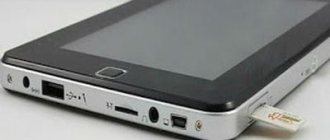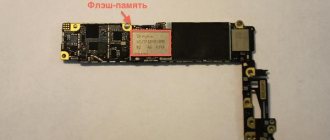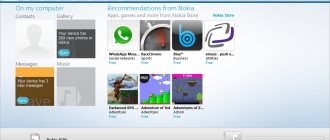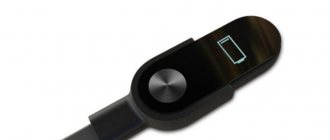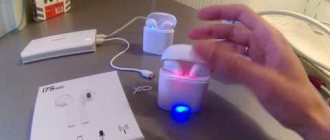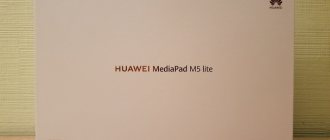How to protect the charging socket from damage
Frequent use of the charging slot leads to rapid wear of this part: complaints about connector failures are the most common in service centers.
Correctly connecting the charger will protect the socket from failure. When charging tablets or mobile phones, it is important:
- do not remove the plug from the slot, holding it by the wire, do not pull or tug on it;
- carefully connect the charger, do not move it inside the connector to avoid loosening;
- do not move the gadget closer to you using the charging cable;
- do not use foreign objects (needles, matches, pins, etc.) to clean the socket, so as not to damage the contacts inside it.
Following these recommendations will reduce the risk of damage to the power slot and extend its life.
Replacing the power socket of Chinese tablets in Moscow
Is your tablet's power connector broken and you can't charge your device? We are waiting for you at any of the branches of the service network in Moscow (). Experienced specialists will diagnose and promptly eliminate faults with a guarantee for the work done. If you do not have the opportunity to bring your gadget to us, order. We provide prompt replacement of the charging socket for Chinese tablets of the following brands:
| ☑explay | ☑ megafon | ☑ beeline |
| ☑fly | ☑ micromax | ☑ supra |
| ☑ huawei | ☑ iconbit | ☑zte |
| ☑ digma | ☑ rhythmmix | ☑ m3 |
| ☑ prestigio | ☑ texEt | ☑ and others |
Remember, any equipment, regardless of the manufacturer, loves to be treated with care! If you use your tablet carefully, following basic operating rules, even a Chinese-made device will serve you for a long time!
Hi all. A 7-inch tablet from X
–
digital
.
According to the owner, the tablet was always charged with great difficulty, since the charge was constantly running out.
For charging, this tablet uses a 2.5 mm DC plug.
, and the
micro usb
is used only for connecting to a computer, and they will not be able to charge the tablet.
DC 2.5 tablet charging plug
First of all, I decided to check the charging itself. To do this, I inserted a needle into the connector and measured the voltage. It was 5.4 volts, which indicated that the charger was fully operational.
Next, I started disassembling the tablet and measuring the voltage on the battery. To do this, you need to insert some thin object, such as a plastic card, into the gap between the top and bottom covers. I used a spatula to disassemble phone cases. After walking around the perimeter of the tablet, the case can be easily disassembled.
IMPORTANT!!!
Before disassembling any tablet, you need to make sure that all additional devices, such as SIM cards and flash drives, are removed from it, since they can easily be damaged during disassembly.
Having disconnected the covers, it was necessary to unsolder the speaker, since it was glued to the back cover and interfered with the repair process.
Unsoldering the speaker wires from the board.
Tablet after disassembly
After disassembly, I immediately measured the voltage on the battery. It was 2.6, which indicated that she was deeply discharged.
The tablet battery voltage is 2.6 volts. The tablet is in deep discharge.
In order to check the performance of the tablet, I decided to recharge it a little from. To achieve this goal, I set the voltage on it to 4.2 volts with a current limit of 1A, and connected it directly to the battery.
Recharging the tablet from a laboratory power supply.
After 5 minutes, the battery voltage rose to 3.9 volts, after which the tablet turned on. Now we could begin to fix the main problem.
To remove the board, you need to unsolder the battery. To do this, using tweezers, I first unsoldered the positive contact of the battery, then the negative one. The wires were secured with nylon tape so that they could not cause a short circuit.
Battery wires
Fixing the battery wires with Kapton tape
After that, I disconnected the cables to the display and sensor, unscrewed 3 bolts and removed the board.
A visual inspection did not yield anything, since all the connectors appeared to be in good condition. Having connected the charger, I decided to measure whether the voltage was coming out of the charging socket. There was no voltage at the output, which indicated a malfunction of the charging socket.
No voltage at the output from the charging connector.
I tried to restore the connector, cleaned the oxides, but all I could achieve was only charging the tablet in a certain position.
I didn’t have such a connector, and after talking with the owner, I decided to connect the charging to the micro USB connector.
The socket is faulty, I decided to unsolder it.
Board, after desoldering the charging socket
Next, it was necessary to throw a jumper from the positive terminal of the micro USB socket to the positive terminal of the charging socket. Before carrying out this procedure, I previewed all the keys and came to the conclusion that such a transfer would not in any way affect the performance of the tablet for the worse.
The places between which it was necessary to throw a jumper are circled in red.
Already soldered jumper.
Next, I conducted the first test, albeit without a battery. To do this, connect the micro USB cord from the tablet to the laboratory power supply, after which the laboratory power supply immediately showed a load that jumped from 0.1 A to 0.5 A. This indicated that the tablet charging system was working properly.
Consumption on a laboratory power supply without a connected battery.
Voltage at battery contacts.
After assembling the tablet, I checked the charging, as well as the connection of the tablet to the computer. Everything worked fine. With a battery charge of 92%, the tablet consumed 0.32A. This is normal, since my laboratory power supply has a current limit on the USB connector.
Charging consumption
Charge indicator on the tablet
After all checks, the tablet was given to the owner. Here's the repair. Thank you for your attention.
Often, due to careless handling or manufacturing defects, a part as flimsy as the charger socket can break. If your tablet's charging port is broken and it is now impossible to charge it, you should seek help from a specialist.
Guaranteed ways to charge your tablet
Even under conditions of proper use, it is not always possible to avoid damage to the connector, which wears out over time. Special devices allow you to charge your tablet if the charging socket is broken.
These methods do not require the use of a charger and are safe for the electronic device.
The first method is a “frog charger”
The method does not apply to monoblocks. If your tablet PC has a molded case and there is no access to the electronics, you will not be able to remove the battery for charging.
The principle of operation of the “frog charger” is to charge the battery directly.
The battery is powered through a special universal device, similar in design to a frog, which is why it received the name of the same name. This budget charger is widely available and is suitable for any portable gadget with removable lithium-ion batteries (Lithium Ion Battery or Li-ion Battery).
To charge the battery, it must be removed from the case, then placed in the “frog”. The contacts are connected to the corresponding terminals on the power supply (negative - to minus, positive - to plus). Then the battery is secured and the device is connected to the electrical network. The indicator will light up if the battery is installed correctly in the charger. Once filled, it is detached and returned back to the tablet.
This method does not require special knowledge and guarantees an increase in the charge of the portable device without charging.
The second way is to use a spare battery
To use the tablet without a power socket, additional batteries are also used: external PowerBanks with high capacity or spare internal batteries.
The portable battery is connected to the electronic gadget via a USB port, which is provided in all modern portable PCs or smartphones. Such devices differ in power, amount of available charge, and strength of outgoing current. With a current of 3A, the PowerBank provides faster charging, while the standard rate is 1A.
The diagram shows how many charges a power bank with a capacity of 10,000 mAh will last for different devices.
The capacity of an inexpensive PowerBank is enough for one charge; models with a larger charge capacity can be used several times. The external battery is filled from a computer, laptop or connected to an outlet.
A replacement battery can be purchased separately and used in place of the exhausted one. Before purchasing, you should check the size and capacity of the device installed in the tablet. It is not necessary to use a replacement battery from the same manufacturer. For any model of portable equipment (from inexpensive Lenovo to Samsung flagships), the Digma universal internal battery is suitable.
The third method is wireless charging
Some modern devices provide wireless charging, for example, the latest Samsung Galaxy smartphones. For older models that cannot be charged wirelessly by default, such devices are purchased separately and are expensive.
The Wireless Charger device connects to the power supply and automatically transmits a pulse to a special sensor on the smartphone's battery. If there is no such sensor on the battery, you can buy it and install it via a USB connector.
The mobile device is placed near a wireless power supply to receive electromagnetic pulses uninterruptedly. The rate of filling the battery in this way is significantly lower than with a standard charger connection.
Gadgets that support wireless charging have an advantage if the charging socket breaks down.
Some smartphones and tablets do not support this function; in this case, installing an additional receiver on the battery for wireless charging will not work.
New development
Relatively recently, namely in 2010, a new device appeared on the computer market - a tablet computer, or simply a tablet. It very quickly became widespread among users due to its compactness, as well as lower cost compared to laptops and desktop computers. It is very convenient to watch videos, listen to music, read books electronically, and communicate on social networks on a tablet. But working on it and writing texts is difficult and inconvenient due to the lack of a keyboard and mouse. The advantage of a tablet is also its lower energy consumption compared to a laptop. But still it has to be charged. There are no problems when there is a charger nearby, but if it is not there, then the question arises: how to charge the tablet without charging?
Questionable tablet charging methods
When there is no additional equipment, unusual methods will help to charge the Tablet PC. It is important to consider that they do not guarantee a positive result. Filling the battery in such ways can lead to its permanent breakdown. Then all that remains is to purchase a new device.
Direct wiring to the board
The easiest way is to charge the tablet's battery directly. This method of recharging is considered extreme, so it should be used with caution.
Incorrect connection may result in a voltage drop, which can lead to damage to the device or electric shock.
The USB plug is cut off from the unnecessary cable, then the insulation is peeled off along its edge. In the cable hole there are 2 multi-colored wires, which are also carefully stripped. It is important not to damage them in the process.
It is not recommended to charge devices using this method!
The bare wires are connected to the battery removed from the case (one for positive, the other for negative) and secured with electrical tape.
The design is plugged into the power source and cannot be touched while charging.
Via headphone jack
It is impossible to charge an Android tablet using the headphone jack. This common myth arose due to the similarity of the connectors, but even if you plug a charger with a 3.5 mm plug into it, nothing will happen. The contacts of the headphone slots and the battery are not connected to each other.
Apple is developing a similar feature for its future devices, planning to use electromagnetic induction to fill the charge. The pulse will be received through headphones. This technology is similar to the described wireless charging function, but it has not yet been implemented.
New development
Relatively recently, namely in 2010, a new device appeared on the computer market - a tablet computer, or simply a tablet. It very quickly became widespread among users due to its compactness, as well as lower cost compared to laptops and desktop computers. It is very convenient to watch videos, listen to music, read books electronically, and communicate on social networks on a tablet. But working on it and writing texts is difficult and inconvenient due to the lack of a keyboard and mouse. The advantage of a tablet is also its lower energy consumption compared to a laptop. But still it has to be charged. There are no problems when there is a charger nearby, but if it is not there, then the question arises: how to charge the tablet without charging?
Connector repair methods
The listed methods for increasing battery charge are temporary measures and cannot be used permanently. Failure of the power slot negatively affects the condition of adjacent connectors and will soon lead to their failure.
Resoldering
To dismantle the screen.
it needs to be carefully picked up from the edge. Self-repair of the device is complicated by the fact that you need to completely disassemble its case. This will require special equipment: small screwdrivers, tweezers, a thin knife (a stationery knife is used) and a soldering device
The most difficult part is to remove the screen and touchscreen to access the internal components of the tablet. You need to pry it off slowly from all sides, otherwise the glass may crack.
After opening the tablet, the board is removed from it. To do this, all cables and wires are unsoldered from it, and the fixing screws are unscrewed. Afterwards, the old connector is removed, the attachment point is cleaned and a new power slot is placed there. The contacts are soldered in place of the previous ones. Then all the parts are inserted back one by one, and the device is turned on for testing.
Unbend the "antennae"
If the socket has become loose from frequent use and does not hold the charger in place, you can lift the locking latches on the plug. This method will not give a long-term effect, but is suitable for quickly charging the tablet.
An example of a broken and normal charging socket.
You will need a needle or small forceps to straighten the antennae. By default, they are hidden and extend when the charger is placed in the power connector, but over time they often stop locking. By lifting them, you can improve the contact of the charger with your tablet PC or smartphone.
Clean the charging socket
Sometimes the cause of the problem is dust accumulation inside the power connector. It is important to clean it with the device turned off and the battery removed, so as not to short-circuit the contacts.
A toothpick or a thin wooden stick will help remove dust from the connector; the main thing is not to overdo it and not damage small parts in the slot. To clean, just place it shallowly in the slot and carefully collect the dirt inside in a circular motion.
Give it to the service center
The fastest way to determine the cause of the problem and fix it is to help specialists. The service center will conduct a full diagnosis of the gadget, and then replace the broken parts.
The price of such repairs varies: sometimes it is possible to restore the tablet's operation only by replacing several components. If the cause of the breakdown is a failure of the power socket, and the remaining parts are in order, then the repair will be inexpensive.
Under what conditions does the battery drain faster?
- At low temperature
It is in cold weather that the battery, due to its properties, begins to consume many times more electricity, leaving the user with 30%, although about an hour ago there were all 70
It is also worth remembering that in particularly hot temperatures the device can also be “heavy”. The capacity of lithium-ion batteries increases significantly, and this can lead to dire consequences, one of which is overcharging the device, which greatly harms the battery itself
